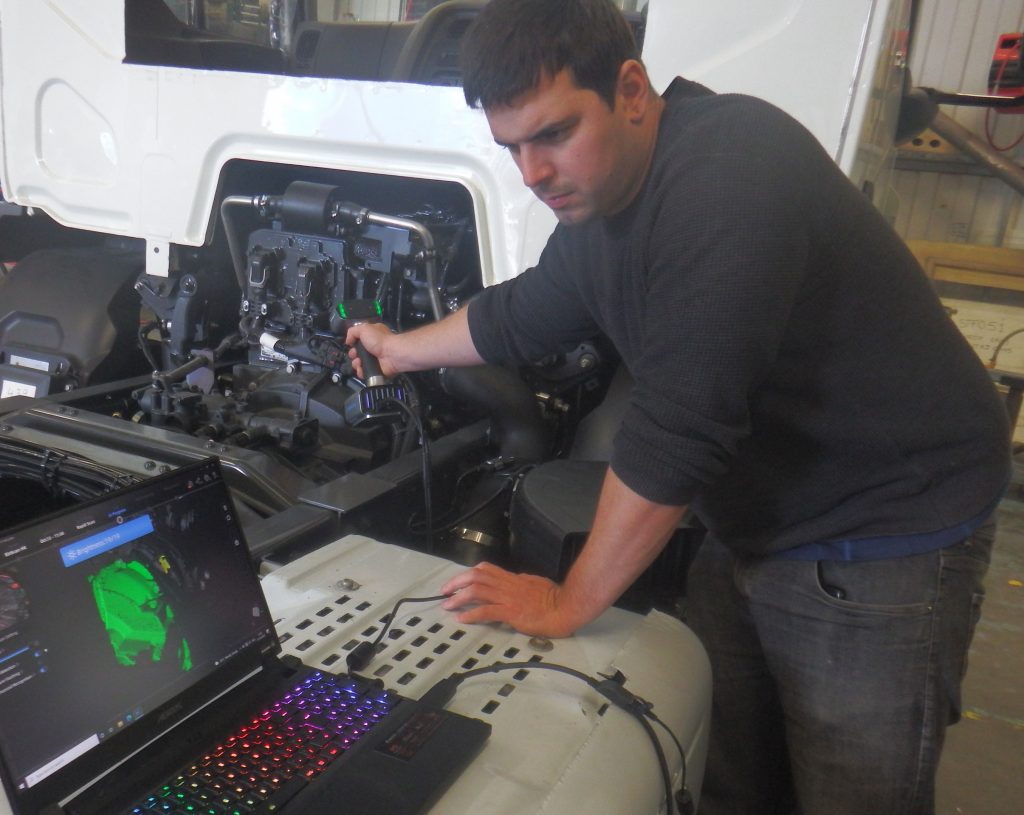
Time, Cost and Carbon Benefits From 3D Technology
Fleets wanting to test prototype parts will see cost, time and carbon benefits with the latest state-of-the-art 3D modelling software, printing and scanning technology adopted by aerodynamic specialists Hatcher.
The company receives numerous bespoke requests, which in the past has often meant Hatcher needing a vehicle to evaluate need and solution, or a 3D model from vehicle manufacturer. However, not all manufacturers are willing to share sensitive data with hauliers and taking a vehicle off the road is clearly an inconvenience. Getting access to new or facelifted models being a particular problem with vehicles often in short supply.
But with mobile scanning technology and 3D printing this is no longer the case. “If we couldn’t get access to a 3D model invariably, we had to get a vehicle on-site for the evaluation and testing process. This, hauliers and fleets were happy to do but it meant it being delivered to our Framlingham factory incurring time and fuel use. Of course, it also takes the vehicle out of operation” says project engineer Kyle Smith.
Using remote scanning technology Hatcher technicians can now get highly detailed scans at a yard or even truck stop. “The technology captures high-resolution scans, quickly and once that critical detail is captured everything needed to produce a full set of prototype parts is in place ahead of receipt of the vehicle for final fit and finish. The time needed with the vehicle is drastically reduced – it could be just a few hours,” adds Kyle.
A newly installed 3D printer reduces the time to test and produce prototype parts even further. These can be tested prior to the task of producing prototype mould or calling in specialist fabricators to develop a pattern which is very labour and time-intensive processes. The task of scanning, designing and producing a prototype in some cases being as short as a day.
Kyle says what could be a 6-8 week process for parts to be designed and manufactured is significantly reduced.
He expects the efficiency savings from the new technology will help to keep prices competitive given rising raw material costs. “We’re taking time and no longer required processes out of our business.”
New image and customer insight too
New scanning and printing technology is joined with the launch of a new website and new branding too.
The new brand is designed to reflect the innovation within the business explains MD Matt Herbert. “It was us that pioneered truck aerodynamics in the 1960’s and we are still doing this today. Our various auto-adjust options and the Freddie air management system brought further refinement to Drag reduction. Currently, we are working with a leading logistics business to further enhance trailer aerodynamics,” he notes.
That innovation is also behind the website redesign. The full product range is outlined but so is some of the development and manufacturing expertise in the business. “We’re seeing more specialist requests from fleet operators where the need to maximise fuel efficiency and green credentials is paramount. Our ability to develop, test and produce bespoke products to overcome specific requirements has been overshadowed by our extensive aerodynamic and conversion range and we wanted to address that. Now visitors to the site can get a much better handle on our development and manufacturing expertise,” he says.
